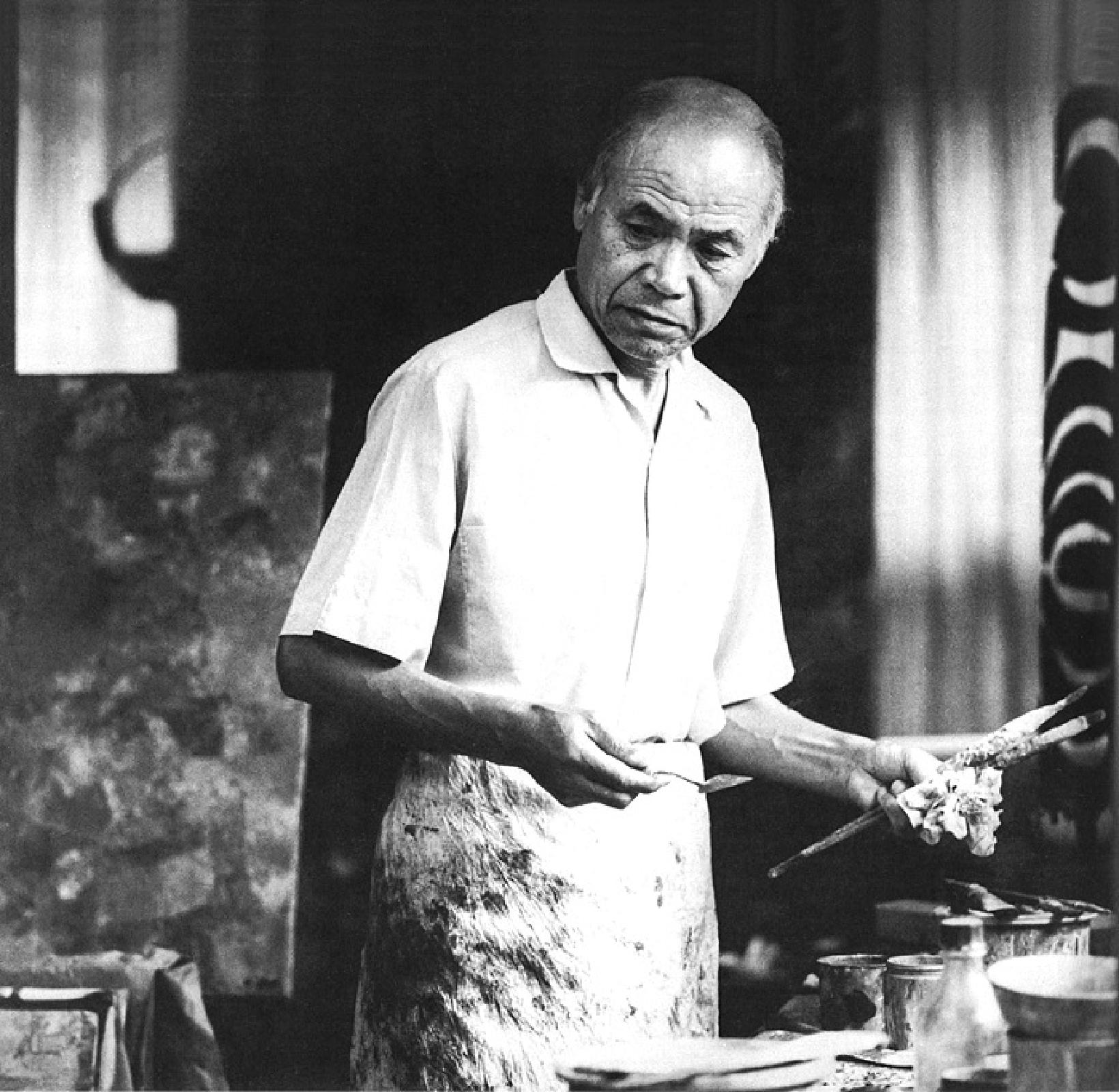Nam Kwan (1911-1990) was born in Chung-song, Kyung-buk, and moved to Japan when he was fourteen. He graduated from the Taiheiyo Art School and later studied at the Tokyo University of the Arts. After independence of Korea, Nam settled in Seoul and helped form the Joseon Art and Culture Association with artists such as Lee Quede, Lee In-Sung and Lee Gyu-Sang. Their annual member exhibition’s showed remarkable ability and his first solo exhibition in Korea was held in 1949. Upon his return to Japan in the early 1950s, Nam was profoundly influenced by the first edition of the Japan International Art Exhibition (later to be referred to as the Tokyo Biennale) and the Salon de Me Tokyo exhibition in Paris that ultimately led Nam to move to France in 1954 to continue his studies.
Nam’s unique style is expressed in a harmonious fusion of materials belonging to the ancient civilizations of the East via Western and modern methods. Nam focused on the expression of human integrity and value rather than visible things. Values such as human happiness or eternal life are interpreted as refined and sophisticated colors and human images are expressed in the shape of hieroglyphic characters.
Nam Kwan’s exhibition have been held in various art museums and galleries including the National Museum of Modern and Contemporary Art, Korea, Tokyo Art Expo, Sao-Paulo Biennale and Musée d'Art Moderne de la Ville de Paris. In 1942 and 1943 he won the Funoke Prize and Mitsui Prize in Japan and was honored at the Biennale de Peinture in Menton in 1966. In Korea, he was awarded the Chun-gok Art Prize in 1967.
Nam’s artworks are in the public collections of numerous global institutions including the Musée National d’Art Moderne France, Musée d'art Moderne Grand-Duc Jean Luxembourg, Torino Galleria d'Arte Moderna e Contemporanea, and the Museum of Ecole polytechnique fédérale de Lausanne.
남관(南寬, 1911-1990)은 1911년 경상북도 청송군 부남면 구천리에서 태어났다. 14세가 되던 해 일본으로 건너가 그 곳에서 성장하였다. 1935년 동경의 다이헤이요 미술학교(太平洋美術學校)를 졸업하고, 이어서 2년간의 연구 과정도 수료한 뒤 일본에서 활동하면서 작가로서의 기반을 닦았다.
남관은 국내 뿐 아니라 해외, 특히 파리 화단에서도 널리 인정받은 작가이다. 그의 예술이 지닌 독자성은 서구적, 현대적인 방식을 통해 동양의 옛 문명에 속하는 소재들을 잘 융화하여 표현하였다는 데에 있다. 그의 작품 세계는 가시적인 것보다도 인간 내면의 진실을 표출해내는 데 무게를 두고 있다. 인간의 희로애락이나 생명의 영원성과 같은 가치들을 정제되고 세련된 색채에 담아, 인간상을 마치 상형문자와 같은 형상으로 표현하였다.
남관은 80년의 생애와 예술, 국립현대미술관(1991), 도쿄 아트 엑스포, 동경 국제무역센터(1990), 상 파울루 비엔날레(1967), 현대 국제 조형 예술 초대전, 파리 시립 현대 미술관(1956) 등을 포함하여 세계 유수의 미술 기관과 갤러리에서 다양한 전시를 개최했다. 1942년과 1943년에 일본에서 후나오케상과 미츠이상을 연달아 수상하였고, 프랑스의 멍통 비엔날레(1966)에서도 대상의 영예를 안았다. 한국에서는 1967년 춘곡 예술상을 수상한 바 있다.
남관의 작품은 파리 국립현대미술관, 룩셈부르크 현대미술관, 토리노 국제미술관, 스위스 로잔 공과대학 국립현대미술관을 포함, 여러 국가와 기관들에 소장되어있다. 작가는 1990년 작고하였다.
